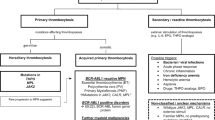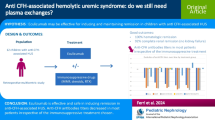Abstract
HLA-G is a non-classical MHC class I molecule whose suppressive activity on immune effector cells is exerted due to interactions with receptors ILT2, ILT4 and KIR2DL4. These receptors are expressed mainly on NK cells and monocytes, and their intensity of expression changes depending on HLA-G level. HLA-G plays an important role in the development of tolerance following organ transplantations and bone marrow stem cell transplantations. HLA-G also participates in the modulation of the immune response during cancerogenesis. The aim of this study was to assess HLA-G level in blood serum, the percentage of NK cells and monocytes with expression of receptors for HLA-G (ILT2, ILT4, KIR2DL4 and NKG2D) in patients who received allogeneic stem cell transplantations, and their influence on the occurrence of graft-versus-host reaction. The study included 32 patients with bone marrow diseases (acute leukemias, myelodysplastic syndrome, chronic myeloid leukemia, paroxysmal nocturnal hemoglobinuria) who received allogeneic stem cell transplantations. We assessed the expression of receptors ILT2, ILT4, KIR2DL4 and NKG2D on monocytes and NK cells, as well as the level of HLA-G in blood serum in patients before conditioning, in the transplant hematopoietic reconstitution period following allogeneic bone marrow stem cell transplantation. The percentage of NK cells with expression of KIR2DL4, ILT2 and ILT4 receptors was higher in patients with 0–I grade GVHD than in patients with II–IV grade GVHD. The percentage of monocytes with expression of ILT4 and ILT2 receptors was higher in patients with 0–I grade GVHD than in patients with II–IV grade GVHD. The level of HLA-G in patients’ blood serum was higher after the stem cell transplantation compared with the period before transplantation. HLA-G level and HLA-G receptors are related to intensity of GVHD and may play the role of a prognostic factor for the development of GVHD and the clinical course of this reaction.
Similar content being viewed by others
References
Hunt JS, Petroff MG, McIntire RH, Ober C. HLA-G and immune tolerance in pregnancy. FASEB J. 2005;19:681–93.
Gonzales A, Rebmann V, LeMaoult J, Horn PA, Carosella ED, Alegre E. The immunosuppressive molecule HLA-G and its clinical implications. Crit Rev Clin Lab Sci. 2012;49:63–84.
Fujii T, Ishitani A, Geraghty DE. A soluble form of the HLA-G antigen is encoded by a messenger ribonucleic acid containing intron 4. J Immunol. 1994;153:5516–24.
Ishitani A, Geraghty DE. Alternative splicing of HLA-G transcripts yields proteins with primary structures resembling both class I and class II antigens. Proc Natl Acad Sci USA. 1992;89:3947–51.
Riteau B, Rouas-Freiss N, Menier C, Paul P, Carosella ED. HLA-G2, -G3 and –G4 isoforms expressed as nonmature cell surface glycoproteins inhibit NK and antigen-specific CTL cytolysis. J Immunol. 2001;166:5018–26.
Lila N, Rouas-Freiss N, Dausset J, Carpentier A, Carosella ED. Soluble HLA-G protein secreted by allo-specific CD4+ T cells suppresses the allo-proliferative response: a CD4+ T cell regulatory mechanism. Proc Natl Acad Sci USA. 2001;98:12150–5.
Le Rond S, Le Maoult J, Crèput C. Alloreactive CD4+ and CD8+ T cells express the immunotolerant HLA-G molecule in mixed lymphocyte reactions: in vivo implications in transplanted patients. Eur J Immunol. 2004;34:649–60.
Curigliano G, Criscitiello C, Gelao L, Goldhirsch A. Molecular pathways: human leukocyte antigen G (HLA-G). Clin Cancer Res. 2013;19:5564–71.
Rouas-Freiss N, Moreau P, Menier C, Carosella ED. HLA-G in cancer: a way to turn off the immune system. Semin Cancer Biol. 2003;13:325–36.
Carosella ED, Moreau P, Le Maoult J, Le Discorde M, Dausset J, Rouas-Freiss N. HLA-G molecules: from maternal-fetal tolerance to tissue acceptance. Adv Immunol. 2003;81:199–252.
Allan DSJ, et al. Tetrameric complexes of human histocompatibility leukocyte antigen (HLA)-G bind to peripheral blood myelomonocytic cells. J Exp Med. 1999;189:1149–56.
Creput C, Le Friec G, Bahri R, et al. Detection of HLA-G in serum and graft biopsy associated with fewer acute rejections following combined liver-kidney transplantation: possible implications for monitoring patients. Hum Immunol. 2003;64:1033–8.
Lila N, Amrein C, Guillemain R, et al. Human leucocyte antigen-G expression after heart transplantation is associated with a reduced incidence of rejection. Circulation. 2002;105:1949–54.
Qiu J, Terasaki PI, Miller J, Mizutani K, Cai J, Carosella ED. Soluble HLA-G expression and renal graft acceptance. Am J Transplant. 2006;6:152–6.
La Nasa G, Littera R, Locatelli F, Lai S, Alba F, Caocci G, et al. The human leucocyte antigen-G 14-basepair polymorphism correlates with graft-versus-host disease in unrelated bone marrow transplantation for thalassaemia. Br J Haematol. 2007;139:284–8.
Rouas- Freiss N, LeMaoult J, Moreau P, Dausset J, Carosella ED. HLA-G in transplantation: a relevant molecule for inhibition of graft rejection? Am J Transplant. 2003;3:11–6.
Hu WY, Wu LQ, Su Z, Pang XF, Zhang B. Expression of human leukocyte antigen-G and acute rejection in patients following liver transplantation. Exp Ther Med. 2014;8:1291–5.
White SR, Floreth T, Liao Ch, Bhorade SM. Association of soluble HLA-G with acute rejection episodes and early development of bronchiolitis obliterans in lung transplantation. PLoS One. 2014;9:e103643. doi:10.1371/journal.pone.0103643.
Luque J, Torres MI, Aumente MD, et al. Soluble HLA-G in heart transplantation: their relationship to rejection episodes and immunosuppressive therapy. Hum Immunol. 2006;67:257–63.
Liu H, Chen Y, Xuan L. Soluble human leukocyte antigen G molecule expression in allogeneic hematopoietic stem cell transplantation: good predictor of acute graft-versus-host disease. Acta Haematol. 2013;130:160–8.
LeMaoult J, Zafaranloo K, Le Danff C, Carosella ED. HLA-G up-regulates ILT2, ILT3, ILT4 and KIRDL4 in antigen presenting cells, NK cells and T cells. FASEB J. 2005;19:662–4.
Author information
Authors and Affiliations
Corresponding author
Ethics declarations
Conflict of interest
None.
Rights and permissions
About this article
Cite this article
Biedroń, M., Rybka, J., Wróbel, T. et al. The role of soluble HLA-G and HLA-G receptors in patients with hematological malignancies after allogeneic stem cell transplantation. Med Oncol 32, 219 (2015). https://doi.org/10.1007/s12032-015-0664-1
Received:
Accepted:
Published:
DOI: https://doi.org/10.1007/s12032-015-0664-1




